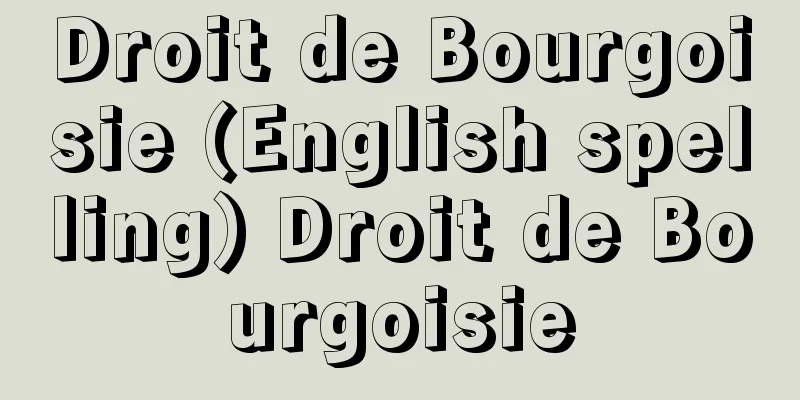Central pillar - central pillar

|
In the primary structure of vascular plants, the stem and root, it refers to the cylindrical part that includes the primary vascular tissue that runs vertically through the center, and the endothelium that closely cooperates with it, the area between the vascular bundles, and the pith. Originally, it was a specific part when the stem and root were divided into three tissue systems, namely the epidermis, cortex, and stele, and it referred to the part inside the endothelium, which is the innermost layer of the cortex. In the stems of seed plants, the endothelium is usually not found, but even in this case, the stele is assumed without any particular boundary. However, when there is a starch sheath surrounding the vascular tissue of a young stem, this is sometimes considered to be the innermost layer of the cortex. The "stele theory" is a theory that compares the stems and roots of different plant groups and discusses phylogenetic relationships based on the importance of the structure of the vascular system in vascular plants. Stylos are classified into several types based on the arrangement of the vascular tissue and the tissues that closely cooperate with it, and the type is consistent depending on the plant taxonomic group and the type of organ. The simplest type is the "primitive stylos" in which solid xylem is simply surrounded by phloem, which is considered the most primitive type phylogenetically and is found in the young sporophytes of ferns, as well as in early vascular plants such as Linnaea. The "radiating stylos" has xylem that is star-shaped in cross section, with the phloem located at the constriction, and is found in the stems of lower ferns and all types of roots. A variation of this type is the plate-like stylos. The center of the radial stylos is often a pith of soft tissue. The "tubular stylos" is a type in which the vascular tissue is cylindrical and the inside is a pith, which is found in many ferns. The "reticulated stylos" has a leaf gap, which is also found in ferns. The stems of gymnosperms and dicotyledonous plants have a "true stele" with vascular bundles arranged in a ring, while the stems of monocotyledonous plants have an "irregular stele" with vascular bundles scattered throughout. [Eimasa Nishino] ©Shogakukan ©Eimasa Nishino "> Main types of central pillars Source: Shogakukan Encyclopedia Nipponica About Encyclopedia Nipponica Information | Legend |
|
維管束植物の一次構造の茎と根について、その中央部を縦に走る一次維管束組織、およびそれと密接に協同している内鞘(ないしょう)、維管束間の部分、髄などを含む円柱状の部分をいう。元来は茎と根を三つの組織系、つまり表皮、皮層、中心柱に区分したときの特定の部分で、皮層の最内層である内皮よりも内側の部分をいう。種子植物の茎では、普通、内皮が認められないが、この場合でも境界をとくに限定しないで中心柱を想定する。ただし、若い茎の維管束組織を取り巻くデンプン鞘があるとき、これを皮層の最内層とすることがある。維管束植物における維管束系の構造の重要性から、異なる植物群の茎や根を比較し、系統関係を論じるのが「中心柱説」である。 中心柱は、維管束組織とそれに密接に協同する組織との配列関係から、いくつかの型に分類され、植物分類群と器官の種類によってその型は一定である。もっとも単純な型は中実の木部が篩部(しぶ)に囲まれただけの「原生中心柱」で、系統発生的にももっとも原始的な型と考えられ、初期の維管束植物といわれるリニアなどのほか、シダ植物の若い胞子体にみられる。木部が横断面で星形となり、くびれたところに篩部があるのが「放射中心柱」で、下等シダ植物の茎とすべての種類の根でみられる。この変型に板状中心柱がある。放射中心柱の中心部は柔組織の髄となることが多い。維管束組織が円筒状になり、内部が髄となった型が「管状中心柱」で、多くのシダ植物でみられる。さらに葉隙(ようげき)を生じた型が「網状中心柱(もうじょうちゅうしんちゅう)」で、これもシダ植物にみられる。裸子植物と双子葉植物の茎は維管束が環状に並んだ「真正中心柱」であり、単子葉植物の茎は維管束が散在した「不整中心柱」となる。 [西野栄正] ©Shogakukan ©西野栄正"> 中心柱のおもな型 出典 小学館 日本大百科全書(ニッポニカ)日本大百科全書(ニッポニカ)について 情報 | 凡例 |
>>: Central retinitis - Central retinitis
Recommend
Agreement - Kyotei (English spelling) agreement
In the broad sense, it is a special agreement betw...
Milli
[1] [Milli-] A word placed before metric units to ...
Courtship behavior
This refers to various behaviors exchanged betwee...
Comical comedy - Mandan
A type of comedy-themed vaudeville show. It is a ...
Tody (little bird) - Tody
A general term for birds of the Todidae family in ...
al-Ḥaram al-Sharīf (English spelling)
…Until the mid-19th century, all citizens lived w...
Replying to @sarah_mcdonald
…The Senoy language is usually divided into three...
Seahorse - Seahorse
→Seahorse Source : Heibonsha Encyclopedia About My...
Kaihosha - Kaihosha
...The price of the first issue was 38 sen. From ...
Akogi - Akogi
[1][1] The coastline of the eastern part of Ano Di...
Japanese combine
...As a result, the sorting section in particular...
ego ideal (English) egoideal
...In this way, the superego is passed down from ...
Annamites
…They are written as Yuen Nanjin in Chinese chara...
Old pine tree
(1) Noh piece. First piece: Waki no mono (suppo...
Vom Kriege (English spelling)
…He was sent as chief of staff during the Polish ...









